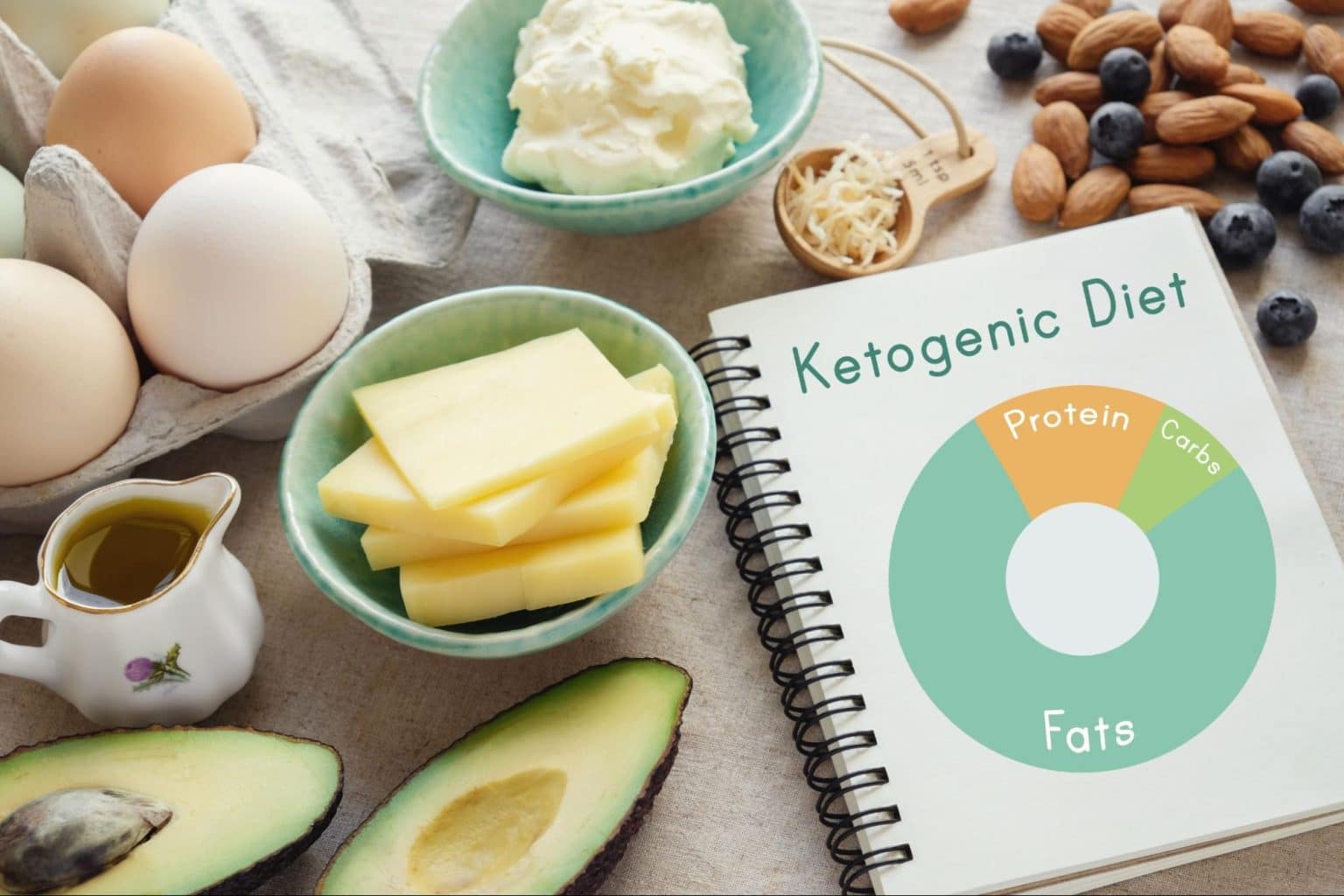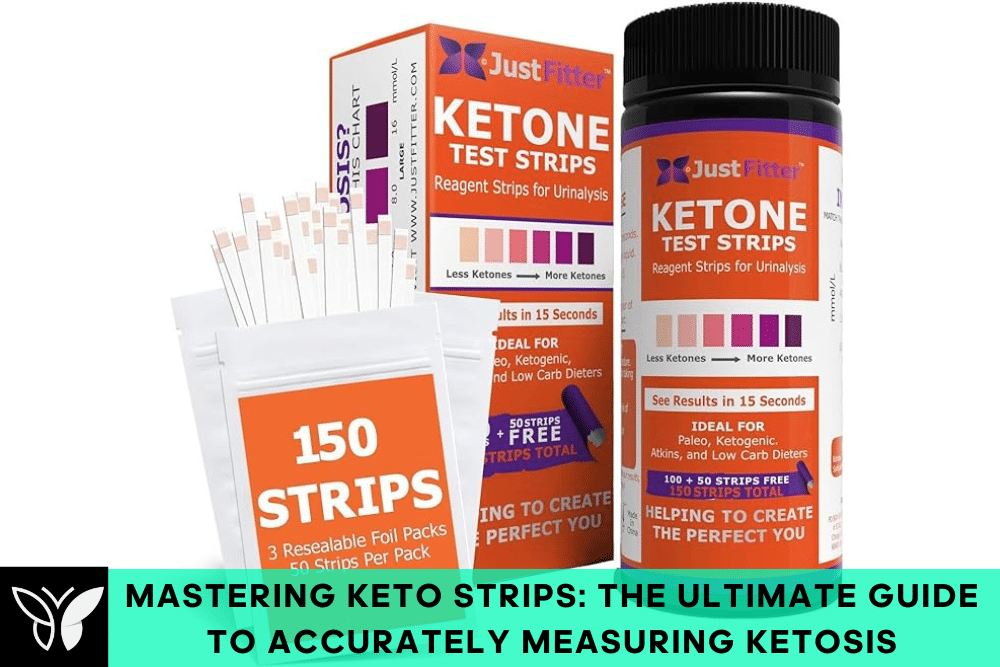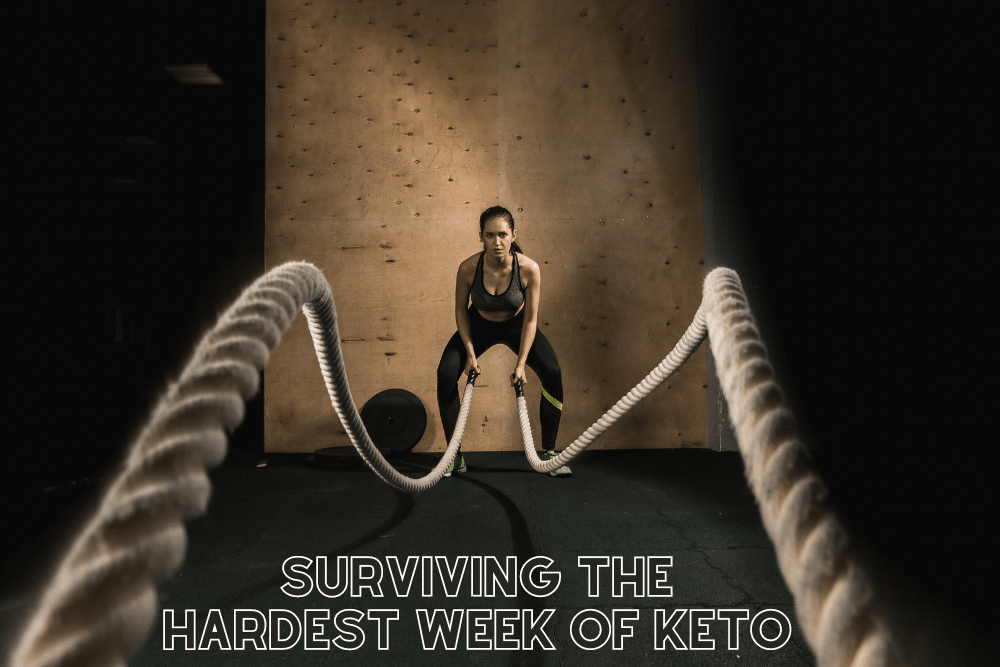Welcome to our comprehensive guide, geared towards revealing the basic rules of a keto diet. These fundamental principles of a ketogenic diet are crucial for fully harnessing the diet’s potential.
This guide will unravel the basic rules of a keto diet, empowering you to make informed decisions and confidently embark on your keto journey. If you’re new to this, you might wonder what the essential guidelines of a keto diet are. Don’t worry; we’ve got you covered.
Understanding the Keto Diet
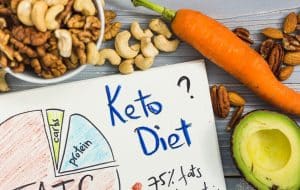
The ketogenic diet, or keto diet as it’s commonly known, has surged in popularity across the globe. This high-fat, low-carbohydrate diet has been touted for its potential benefits, including weight loss, improved energy levels, and better control over blood sugar levels.
At its core, the keto diet revolves around drastically reducing carbohydrate intake and replacing it with fat. This carb reduction puts your body into a ketosis metabolic state, where fat is burned for energy instead of glucose. Ketosis also turns fat into ketones in the liver, which can supply power to the brain.
The Basic Rules of a Keto Diet
The basic rules of a keto diet involve cleverly manipulating your diet to enter a metabolic state known as ‘ketosis.’ By following these primary regulations of a ketogenic diet, your body begins to burn fats as its primary energy source to benefit your waistline and overall health.
Rule #1: Restrict Carbohydrate Intake

The first of the basic rules of a keto diet is limiting your carbohydrate intake. The cornerstone of keto is its drastic carbohydrate restriction. Aim for a daily intake of 20-50 grams of net carbs, which excludes fibre from your total carb count. Why the carb cutback? It throws your body into a metabolic state called ketosis, which starts burning fat (ketones) for fuel instead of glucose (derived from carbs). This switch unlocks the potential health benefits associated with keto.
Carb Culprits to Cut:
- Sugary drinks: Soda, juice, sports drinks
- Grains: Bread, pasta, rice, cereals
- Starchy vegetables: Potatoes, corn, peas
- Fruits (high-sugar): Mangoes, bananas, grapes
- Sweetened treats: Cakes, cookies, pastries
Carb Champions to Choose:
- Non-starchy vegetables: Leafy greens, cauliflower, broccoli, peppers
- Healthy fats: Avocado, olive oil, nuts, seeds
- High-protein meats: Chicken, fish, beef, pork
- Full-fat dairy: Cheese, unsweetened yoghurt, heavy cream
- Low-sugar fruits: Berries (raspberries, strawberries)
Remember: Individual carb tolerance can vary. Consult a healthcare professional or registered dietitian for personalised guidance.
Rule #2: Prioritise High-Fat Foods

The second of the basic rules of a keto diet is prioritising high-fat foods. Keto throws away the low-fat rulebook, instead declaring healthy fats the show’s star. Forget restriction because 70-80% of your daily calories come from delicious, nourishing fats here. But remember, quality matters! Not all fats are created equal.
Meet the good guys:
- Monounsaturated fats: They’re the heart-healthy heroes, found in olive oil, avocado oil, nuts, and seeds like almonds and macadamia. Think creamy avocado slices drizzled with olive oil or a handful of crunchy almonds for a satisfying snack.
- Polyunsaturated fats: These superstars support brain health and inflammation reduction. Dive into fatty fish like salmon and tuna, or sprinkle chia and flaxseeds on your meals for an extra nutritional boost.
- Saturated fats (moderation is key): While these get a bad rap sometimes, sources like coconut oil, ghee, and eggs offer benefits in moderation. Enjoy a scrambled egg breakfast or indulge in a dollop of ghee on roasted vegetables.
But wait, there’s more! Steer clear of the bad guys: trans fats and processed vegetable oils. These lurk in fried foods, packaged snacks, and baked goods, offering no nutritional value and potentially hindering your health.
Why prioritise healthy fats? They keep you full and satisfied, prevent energy crashes, and fuel your body for optimal performance. Plus, they aid in nutrient absorption and support various bodily functions.
Remember:
- Variety is vital: Explore different healthy fat sources to keep your taste buds happy and your body nourished.
- Read labels: Be mindful of hidden fats in processed foods.
- Cook with confidence: Embrace healthy fats to create delicious and satisfying keto meals.
By embracing the healthy fat revolution, you’ll unlock sustained energy, improved satiety, and a keto journey filled with flavour and satisfaction.
Rule #3: Moderate Protein Consumption
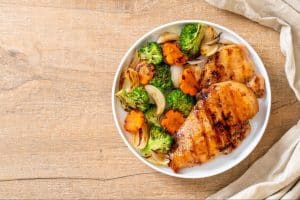
Another one of the basic rules of a keto diet is adequate protein intake. Protein may be a nutritional powerhouse, but on the keto journey, moderation is key. Unlike standard diets, consuming excessive protein on keto can disrupt your ketosis state, the fat-burning magic we all aim for.
Why the protein limit? It all boils down to gluconeogenesis. This clever process allows your body to convert protein into glucose (sugar) for energy. While helpful in other situations, on keto, it becomes a roadblock. Excess protein fuels gluconeogenesis, potentially pushing your body out of ketosis and stalling your fat-burning progress.
So, how much protein is ‘moderate’? Aim for 0.8-1 gram of protein per pound of body weight daily. This translates to roughly 120-150 grams for a 150-pound individual. Remember, this is a guideline, not a rigid rule. Consider your activity level and goals. Athletes or those aiming for significant muscle building might require slightly more, while others may thrive on the lower end.
Protein is still your friend! Choose lean sources like chicken, fish, tofu, tempeh, or eggs. Moderate your intake of red meat, as it tends to be higher in protein and fat. Explore plant-based options like lentils and beans, enjoying them in smaller portions due to their carbohydrate content.
Remember, consistency is critical. Spread your protein intake throughout the day to avoid overloading your system immediately. Track your macros and monitor your ketones to find your sweet spot. Feel free to experiment and adjust as needed. With a moderate protein approach, you’ll fuel your body efficiently, optimise ketosis, and unlock the full potential of your keto journey!
Rule #4: Stay Hydrated and Maintain Electrolyte Balance

Hydration and regular exercise are other critical elements of the basic rules of a keto diet. When adopting a ketogenic diet, hydration and electrolyte management are paramount. Water excretion naturally increases as your body shifts from glucose to fat for energy. This process and a decrease in carbohydrate intake can lead to significant fluid and electrolyte loss, especially sodium, potassium, and magnesium. Drinking 8-10 glasses of water daily is crucial to counterbalance this loss and support your body’s hydration needs.
Electrolyte balance is equally critical in keto. Reduced insulin levels can cause the kidneys to excrete more sodium, leading to symptoms like headaches and fatigue. Potassium and magnesium are vital for heart function, muscle contractions, and avoiding cramps. To maintain electrolyte levels, consider incorporating foods rich in these minerals, such as leafy greens, avocados, and nuts. Alternatively, supplementation might be necessary, but always consult a healthcare professional before starting any new supplement regimen to ensure safety and efficacy.
Staying hydrated and maintaining electrolyte balance is fundamental to a successful keto diet. These steps help mitigate the initial side effects of the diet’s early stages and support overall health and well-being as your body adapts to its new fuel source.
Rule #5: Avoid Sugary and High-Carb Foods

The fifth of the basic rules of a keto diet is avoiding sugary and high-carb foods. The keto journey requires a firm farewell to sugary and high-carb foods. While tempting, bread, pasta, rice, sugary drinks, and sweet treats are roadblocks to your ketosis goals. Why? These indulgences pack a powerful carb punch, easily exceeding your daily limit and sending your body out of its fat-burning state.
But why are carbs the enemy? They get quickly converted into glucose (sugar) for energy. While this is normal, excess glucose throws a wrench in the works of keto. Your body prioritises using glucose for fuel, ignoring the readily available fat stores. This stalls your progress and keeps you from entering ketosis, the fat-burning zone.
So, what foods are off-limits?
- Grains: Bread, pasta, rice, cereals, crackers – all high in carbs and best avoided.
- Sugary drinks: Soda, juice, and sports drinks – are loaded with sugar and offer no nutritional value.
- Starchy vegetables: Potatoes, corn, peas, beets – enjoy low-carb options like leafy greens and broccoli instead.
- Sugary treats: Cakes, cookies, candy – their impact on your carb intake is too high.
Remember, this isn’t deprivation; it’s empowerment! Explore the vast world of delicious keto-friendly alternatives. Think savoury meat dishes, creamy avocado creations, and vibrant salads bursting with flavour. Embrace healthy fats and low-carb vegetables to unlock a world of culinary possibilities.
Here are some tips to navigate this rule:
- Read labels carefully: Become a detective and watch for hidden sugars and starches.
- Plan your meals: Prepare keto-friendly snacks and meals to avoid temptation during busy moments.
- Find substitutes: Craving bread? Try low-carb tortillas or lettuce wraps. Are you yearning for something sweet? Explore sugar-free desserts or naturally sweet fruits like berries.
- Focus on the positives: Celebrate your progress, experiment with new recipes, and discover a keto lifestyle’s energy and health benefits.
By staying mindful of sugary and high-carb foods, you’ll unlock the full potential of your keto journey, paving the way for sustained weight loss, improved health, and a life fueled by healthy fats and delicious possibilities.
Rule #6: Read Labels Carefully

To cap off the basic rules of a keto diet, read labels carefully. When shopping for food, it’s essential to read labels carefully to check for hidden carbs and sugars.
Labels become treasure maps on your keto quest, revealing the hidden carb secrets lurking within seemingly innocuous ingredients. Don’t underestimate the power of a meticulous label scan – it could mean the difference between staying in ketosis and unknowingly derailing your progress.
Why Label Vigilance Matters:
- Sneaky Sugars: Sugar goes by many aliases – dextrose, sucrose, maltose, the list goes on. Be mindful of these disguised sweeteners, even in unexpected places like salad dressings or condiments.
- Fibrous Fiction: While fibre is your keto friend, be wary of inflated fibre counts that can artificially lower the net carb value. Subtract fibre from total carbs to get the true picture.
- Sugar Alcohols: Some sugar alcohols, like maltitol or sorbitol, can impact your blood sugar and potentially stall ketosis. Check their impact on the individual label.
Added Starches: Modified food starch, thickeners, and even ‘keto-friendly’ flours can harbour hidden carbs. Scrutinise ingredient lists closely.
Mastering the Label Lingo:
- Net Carbs: This is your holy grail number. Subtract fibre from total carbs to find it. Aim for 20-50 grams daily.
- Serving Size: Pay attention! The listed nutrient values apply to one serving only. Don’t get duped by a seemingly low-carb option if the serving size is minuscule.
- Ingredient Order: Ingredients are listed in descending order by weight. Prioritise products with healthy fats and protein at the top.
Even foods marketed as ‘low-carb’ or ‘sugar-free’ can contain ingredients that may affect ketosis.
Click here to explore “How to Spot Keto Friendly Labels: Understanding Nutrition Facts for Your Keto Journey.”
The Benefits of a Keto Diet
Adopting a keto diet can offer several health benefits, including:
- Weight Loss: By using fat as the primary energy source, the body becomes more efficient at burning fat for energy, which can lead to weight loss.
- Improved Blood Sugar Control: The keto diet can help stabilise blood sugar levels, which is particularly beneficial for individuals with type 2 diabetes.
- Enhanced Mental Clarity: Some people on a keto diet report improved focus and mental clarity, possibly due to the steady energy supply from ketones.
- Increased Energy Levels: After the initial adaptation period, many people experience a significant boost in energy levels and endurance.
Common Challenges and Solutions
Transitioning to a keto diet can come with its challenges, such as the keto flu, cravings for carbs, and difficulty finding variety in meals. However, these can be mitigated with proper planning, staying hydrated, and ensuring adequate electrolyte intake.
Conclusion on The Basic Rules of a Keto Diet
As you delve deeper into the basic rules of a keto diet, you’ll realise that it’s not just a diet but a lifestyle change. The keto diet offers a unique weight loss and health improvement approach, focusing on fat as the primary energy source. Adhering to the basic rules of a keto diet outlined above enables individuals to navigate it and reap its potential benefits successfully.
Mastering the basic rules of a keto diet requires diligence and commitment, but the potential benefits are worth it. Start your journey today and discover the transformative power of a keto diet!
Ready to embark on your keto journey? Discover delicious keto-friendly recipes and meal plans tailored to your needs. Start transforming your health today. Click here to explore our comprehensive keto guide.
Disclaimer: This blog post is for informational purposes only and does not constitute medical advice. Please consult your healthcare professional before starting any new diet or wellness program.
